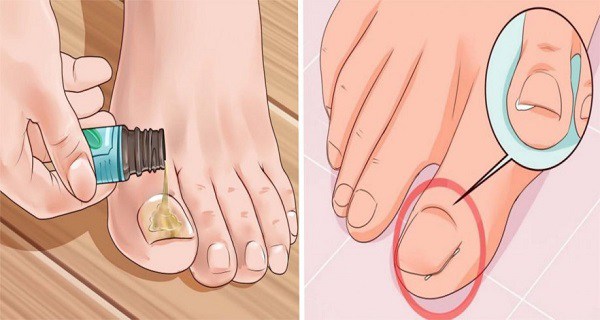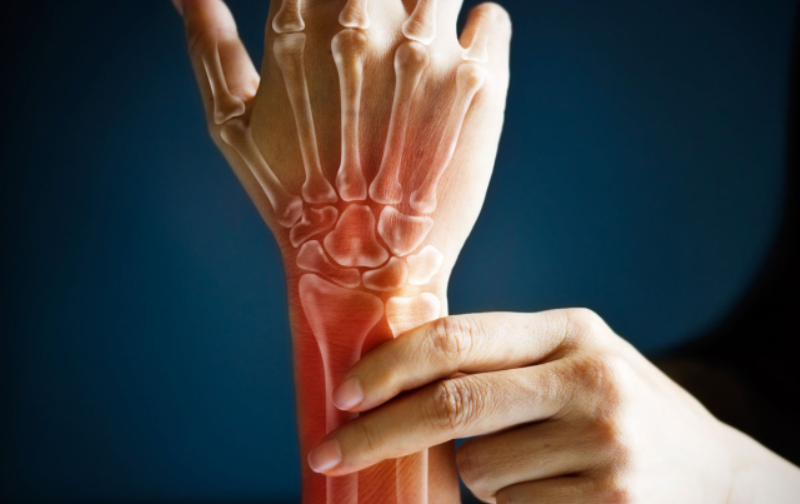Ingrown toenails can be excruciatingly painful, and regular use of the toes during the day aggravates the issue.
An ingrown toenail, also known as onychocryptosis, is a common toenail problem that can occur at any age. If you do not take adequate care of this uncomfortable disease, it can become infected. However, some research indicate a somewhat higher male-to-female ratio, particularly in the 14-25 age bracket.
Trauma, improper nail cutting technique, anatomical factors such as thickening of the nail plate, a pincer-shaped toenail, a subungual exostosis tight-fitting footwear, pressure from abutting digits due to a hallux valgusor, lesser toe deformities, and the presence or use of isotretinoin in the treatment of severe acne can all cause this problem.
Ingrown toenails are classified into three stages: mild (stage 1), moderate (stage 2), and severe (stage 3). The patient in the first group may develop nail-fold swelling, pain with pressure, erythema, and edema.
Drainage, increased edema, infection, and ulceration of the nail fold are symptoms of moderate instances. However, in the most severe situations, the patient may develop chronic inflammation, granulation, and significant nail-fold hypertrophy.
Find out more about: Consume This Protein-Packed Breakfast to Reduce Inflammation And Your Waistline
In all cases, however, it causes redness, pain, swelling, and possibly infection, and it frequently affects the big toe. It produces excruciating agony in almost all cases and can easily become infected if not treated promptly.
This issue can be treated at home, but if it causes unbearable and continued pain, you should visit your doctor in order to find he easiest and fastest way to treat it and prevent further complications.
The following symptoms indicate that you have an ingrown toenail:
- Pain and tenderness in the toe along the side or both sides of the nail
- Swelling of your toe around the nail
- Redness around the toenail
- Infection of the tissue around your toenail
Once more, these are some of the prevailing causes of an ingrown toenail:
- Cutting toenails too short or not straight across
- Deformities of the toes
- Injury
- Having abnormally curved toenails
- Subungual exostosis (outgrowth of bone from the toe tip)
- Use of isotretinoin in the treatment of severe acne
- shoes that crowd the toenails, like heels or too tight shoes
Wider nails fold and flatter nails increase the likelihood of ingrown toenails, according to specialists. As a result, one research of 46 participants found no variation in the anatomic shape of toenails in patients with or without ingrown toenails.
Adolescent perspiration causes weakened nails that are prone to splitting, resulting in nail spicules that can pierce the lateral skin.
Because of poor nail care, decreased mobility, and diminished vision, these spicules can become a chronic problem in the elderly. Furthermore, as we age, our nails expand, making them harder to cut and frequently infected, uncomfortable, and ingrown.
A toenail, on the other hand, may develop ingrown due to its natural thickness or shape.
Diabetes, or any other condition that causes poor blood flow in the foot, puts you at an increased risk of having ingrown toenails. If left untreated, an ingrown nail can infect the underlying bone, resulting in a serious bone infection.
It is important to note that if you have a difficult-to-heal open sore (foot ulcer), you should probably consider surgery to avoid tissue deterioration and death (gangrene), which is caused by an interruption in blood flow in some body area.
Natural remedies
Fortunately, there are some natural solutions to this problem that do not require seeing a doctor, and this article will highlight the most successful of them. Many people turn to surgery in the second or third stage, but it is not necessary.
Soak or wash your feet
To clean the region and remove bacteria, immerse the foot in soapy, warm water 3-4 times per day. You can boost the impact by adding Epsom salts to soften the skin and assist the removal of the toenail from the skin.
Apple Cider Vinegar Wash
This is one of the most effective treatments available for this issue. Soak your feet in warm water with 14 cup apple cider vinegar. You can also apply this remedy to the afflicted region. This method will prevent bacterial infections but will not treat existing ones.
Wash with Castile Soap
You should wash your feet twice a day with soap and water. Choose Castile soap for the greatest results because it contains pure and natural components. Keep your feet clean and dry as well.
Dental Floss Under the Nail
Placing dental floss or cotton wisps under the damaged toenail will cause it to grow in the correct direction. You should try to elevate the corner that is digging into your flesh.
Then, roll a small cotton or gauze piece between your fingers to form a wick or a small roll, and place it between the skin and the nail.
If you want to avoid a burning feeling, use flavourless dental floss. Then, lift the nail long enough to allow it to grow out and away from the skin. Despite the discomfort, this is an excellent technique to solve the problem.
You can also try to push the roll father every day as you wet your foot. Furthermore, refill the roll on a daily basis and be patient as the nail grows out, which will take a few weeks. In order to press the nail underneath, you may need to trim it slightly.
Essential Oils for Pain and Inflammation
To make your own essential oil, combine a carrier oil, such as coconut oil, with clove, rosemary, lavender, melaleuca (tea tree oil), and cypress. Apply it to the damaged region to naturally treat it and provide a natural environment for recovery.
As we stated, sometimes you will need to cut the ingrown toenail, which may be a difficult procedure. Here is how to do it carefully and easily:
- Soak the foot in some warm water with Epsom salts or castile soap for 20 minutes. This will soften the toenail and treat the swelling.
Then, carefully push the swollen skin back with clean hands. Do not push it more than the swelling allows. - Next, cut the nail straight across, starting from the edges. Cut the nail from the sides, not from the middle.
- Then, place a piece of cotton between the skin and the nail, in order to prevent it from coming back, and thus give it another direction to grow.
- Now you should apply the recipe below on the affected place and secure it with a bandage.
- You should avoid socks and shoes if possible for some time to help the healing, and wear flip-flops or shoes which do not allow dirt to enter it.
- Change the cotton on a daily basis, or even twice a day, in order to prevent infections.
The following homemade ointment can help you treat ingrown toenails, and soothe the pain and infection. Apply it directly on the affected area, and you will accelerate the healing process.
Ingredients:
- 2 ounces coconut oil
- 5 drops lavender oil
- 2 ounces aloe Vera gel
- 1 drop oregano oil
- 5 drops tea tree oil
- 2 drops peppermint oil
- 5 drops eucalyptus oil
Preparation and use:
- Mix all ingredients in a small glass jar, and close it tightly. Stir it well with a small spoon.
- Apply it on a dry and clean toenail, and allow it to air-dry. Wear flip-flops.
- You can also bandage it and put on some loose-fitting shoes.
- Repeat this procedure 2-3 times during the day. Afterward, wash the hands and avoid their contact with the eyes. Be extra careful when using oregano oil, as it is a natural antibiotic, but it can cause a burning sensation.
Avoid High Heels and Tight Shoes
These shoes should be avoided if you have ingrown toenails since they provide pressure to the problem area and inhibit the healing process. However, sandals are advantageous because they allow the nail to air freely and heal.
After reading this text you can also read about: This Will Happen To Your Body If You Eat 2 Black-Spotted Bananas Per Day For A Month!



